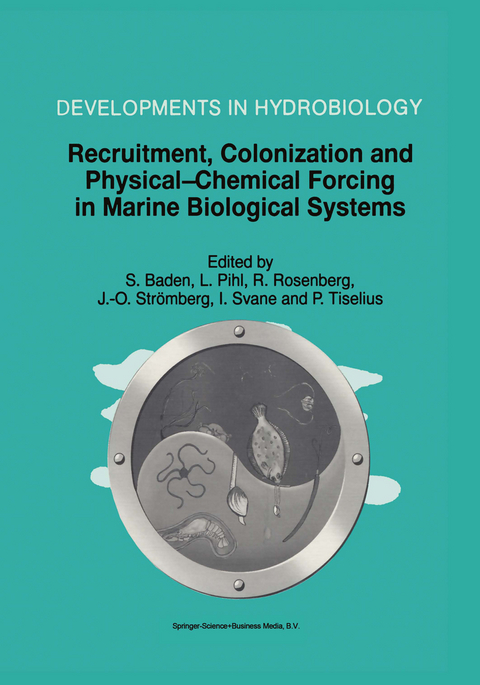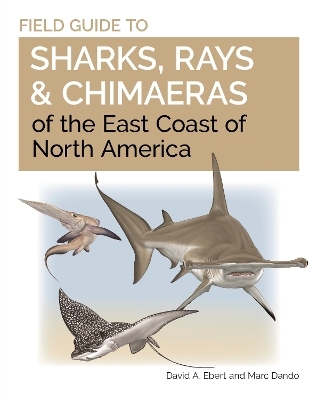
Recruitment, Colonization and Physical-Chemical Forcing in Marine Biological Systems
Springer (Verlag)
978-0-7923-5273-0 (ISBN)
The selected topics were: `Recruitment and colonisation' and `Physical and Chemical Forcing on Marine Biological Systems', partly reflecting the present research interests at Kristineberg.
In this volume, recruitment and colonisation processes cover primarily the dynamics of interspecific interactions within assemblages as well as the effects of hydrodynamic variables. Both laboratory and field studies are emphasised.
The contribution of papers within the topic `Physical and Chemical Forcing on Marine Biological Systems' deals with structuring effects of, for example, tides, temperatures, nutrients and hypoxia on the physiology and ecology of marine organisms.
The book covers many aspects of marine life. It is our hope that the selected topics will fascinate readers and be of wide interest to students and researchers in marine biology.
Larval supply and recruitment of benthic invertebrates: do larvae always disperse as much as we believe?.- Recruitment in Macoma balthica after mild and cold winters and its possible control by egg production and shrimp predation.- The spreading potential of polychaete larvae does not predict adult distributions; consequences for conditions of recruitment.- Regrowth of kelp and colonization of epiphyte and fauna community after kelp trawling at the coast of Norway.- Pentapora fascialis (Pallas) [Cheilostomata: Ascophora] colonization of one sublittoral rocky site after sea-storm in the northwestern Mediterranean.- The alternating recruitment pattern in Ensis minor, an exploited bivalve in the Gulf of Trieste, Italy.- Recolonization patterns of meiobenthic communities in brackish vegetated and unvegetated habitats after induced hypoxia/anoxia.- Active habitat selection of megalopae and juvenile shore crabs Carcinus maenas: a laboratory study in an annular flume.- Do barnacle larvae respond to multiple settlement cues over a range of spatial scales?.- Local control of recruitment in an epifaunal community and the consequences to colonization processes.- Recolonization dynamics in areas disturbed by bottom fishing gears.- Vertical migration and selective tidal stream transport in the megalopa of the crab Carcinus maenas.- Temporal fluctuation in the abundance of a semelid bivalve, Theora fragilis (A. Adams) in Maizuru Bay, Sea of Japan.- Do hydrodynamic factors affect the recruitment of marine invertebrates in a macrotidal area?.- Effects of green algal mats on infaunal colonization of a New England mud flat — long-lasting but highly localized effects.- Hydrodynamic consequences of barnacle colonization.- The influence of epilithic microbial films on the settlement ofSemibalanus balanoides cyprids — a comparison between laboratory and field experiments.- Scale-dependent benthic recolonization dynamics: life stage-based dispersal and demographic consequences.- Recolonization and succession in soft-sediment infaunal communities: the spatial scale of controlling factors.- Physiological flexibility: a necessity for life in anoxic and sulphidic habitats.- Manganese in the haemolymph and tissues of the Norway lobster, Nephrops norvegicus (L.), along the Swedish west coast, 1993–1995.- Do physical and chemical factors structure the macrobenthic community at a continental slope in the NE Atlantic?.- Interactions between two deposit-feeding echinoderms: the spatangoid Brissopsis lyrifera (Forbes) and the ophiuroid Amphiura chiajei (Forbes).- Resource limitation in soft sediments — differential effects of food and space in the association between the brittle-star Amphiura filiformis and the bivalve Mysella bidendata?.- Macrobenthic metabolism as carbon and nitrogen fluxes in a coastal area exposed to strong tidal currents (Dover Strait, eastern English Channel).- Long-term changes in the diversity and faunal structure of benthic communities in the northern North Sea: natural variability or induced instability?.- Vertical migratory behaviour of the euphausiid, Meganyctiphanes norvegica, and its dispersion in the Kattegat Channel.- Vertical distribution, grazing and egg production of calanoid copepods during winter—spring in Gullmarsfjorden.- An in situ experiment to investigate the modification of particulate matter and urea above a benthic sandy silt community in the Baltic Sea.- Small-scale plankton patchiness in the Black Sea euphotic layer.- Pelagic—benthic coupling in the Bay of Fundy.
| Erscheint lt. Verlag | 30.11.1998 |
|---|---|
| Reihe/Serie | Developments in Hydrobiology ; 132 |
| Zusatzinfo | 1 Illustrations, color; 74 Illustrations, black and white; IX, 380 p. 75 illus., 1 illus. in color. |
| Verlagsort | Dordrecht |
| Sprache | englisch |
| Maße | 178 x 254 mm |
| Themenwelt | Naturwissenschaften ► Biologie ► Limnologie / Meeresbiologie |
| Naturwissenschaften ► Biologie ► Ökologie / Naturschutz | |
| Naturwissenschaften ► Biologie ► Zoologie | |
| ISBN-10 | 0-7923-5273-4 / 0792352734 |
| ISBN-13 | 978-0-7923-5273-0 / 9780792352730 |
| Zustand | Neuware |
| Haben Sie eine Frage zum Produkt? |
aus dem Bereich


